Reply To:
Name - Reply Comment
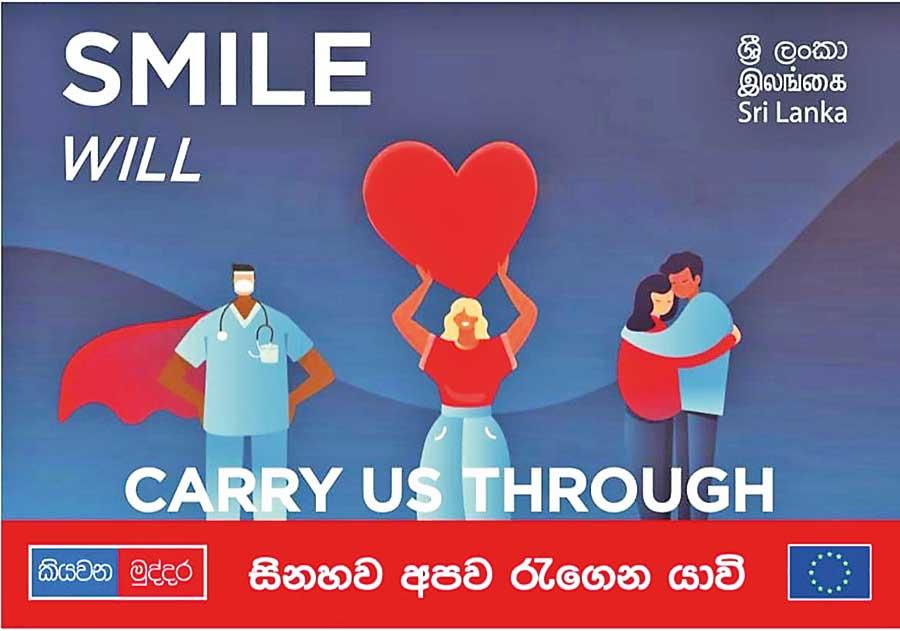
- Switzerland is another country that raised money by issuing a special Covid charity stamp, which brought in 23 million Swiss Francs
- These cards can be posted to front line workers in the battle against Covid-19, and others, as a goodwill gesture. The colours are symbolic – blue signifies universal elements and red stands for stamps
At a time when the science and sphere of philately are struggling to retain its former status in Sri Lanka, philatelist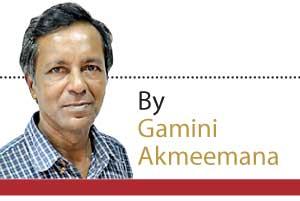 Samantha Niroshana Pieris is making a unique contribution with his ‘stamps as non-book literature’ (Muddara Kiyaveema) project.
Samantha Niroshana Pieris is making a unique contribution with his ‘stamps as non-book literature’ (Muddara Kiyaveema) project.
Niroshana Pieris has undoubtedly pioneered this subject on the island, and his patient research and hard work have now culminated in ‘Write a Letter – Bring a Smile,’ an EU-funded Awareness with Human Action (AHA) Project.
The idea is to explore how stamps can too be used as communication and public relations tools.
As part of this Kiyawana Muddara Project, 5,000 attractive red and blue postcards with the slogan Work Will Carry Us Through have been printed and distributed at three centres–the public libraries of Ratnapura, Bulathkohupitiya and Kirimetiyana.
These cards can be posted to front line workers in the battle against Covid-19, and others, as a goodwill gesture. The colours are symbolic – blue signifies universal elements and red stands for stamps.
The choice of public libraries as venues is in line with Niroshana’s thinking that stamps too are reading material – literature that need to be read visually.
He thinks stamps and philatelic literature should be part of every library collection.
This project aims to empower society with knowledge and attitudes to deal with misinformation, hate speech and discrimination against communities, plus developing community activism and community capabilities in the face of a global crisis such as the coronavirus epidemic. Another aim of the project is to use stamp literature to promote national unity.
"Philatelist’s dedication to ‘reading’ stamps wins recognition from the EU"
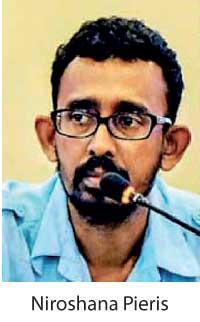 Niroshana points out that Sri Lanka is lagging behind many countries in using stamps to raise awareness about the pandemic.
Niroshana points out that Sri Lanka is lagging behind many countries in using stamps to raise awareness about the pandemic.
“Iran was the first country to issue a stamp during the pandemic. The stamp was a tribute to Iran’s health workers risking their lives,” he says.
The revenue raised by the sale of this stamp was used to combat the epidemic.
Switzerland is another country that raised money by issuing a special Covid 19 charity stamp, which brought in 23 million Swiss francs.
If a wealthy, developed country like Switzerland uses such methods for fundraising, Niroshana asks why Sri Lanka can’t think along similar lines.
The Austrian Covid 19 stamp, too, is a unique case. It was printed on toilet paper. The decision may have been prompted by the ‘toilet paper scandal’ of the early stages of the pandemic when the public across the western world rushed to stock toilet paper as the lockdown was declared and supermarkets closed.
The second part of this project deals with national reconciliation, and is titled ‘Ahala thibunata dekala nethi aya.’
Niroshana notes that stamps have never been used in this country to promote that vital issue.
With such deep involvement in philately, one would expect Niroshana to be a passionate stamp collector as well. But that isn’t his main interest. It’s in the stories that stamps tell.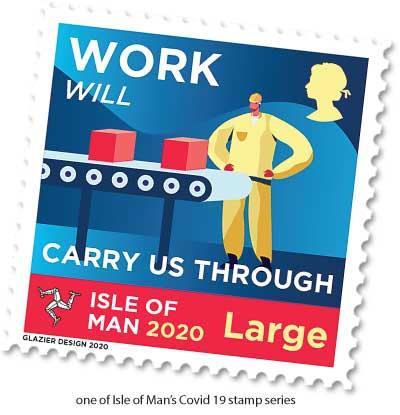
He says that the average stamps being so small, people usually overlook little details which can be hugely significant. He takes several Sri Lankan stamps, dating from the British period to the 1990s, and shows minuscule details which have great socio-political and historical significance.
Many philatelists start their interest as a childhood hobby. Niroshana’s interest in stamps began when he was working as a researcher for journalist Dharman Wickremaratne’s Environmental Journalists’ Forum.
“The EJM undertook a study of every waterfall in Sri Lanka,” he recalls. “While researching our literature for any reference to waterfalls, I noticed that eight major waterfalls were featured on our stamps, and that’s where my interest began.”
From 2007-2008, he wrote two books about stamps. The concept of stamps as non-book reading material came at that time.
"If other countries can, why can’t Sri Lanka follow that example, asks philatelist Niroshana Pieris"
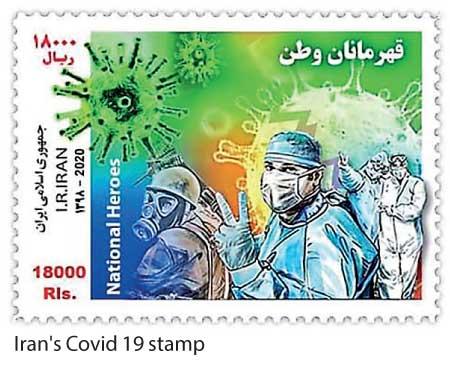 “I began by linking stamps,” he says. “For example, if you take a commemorative stamp featuring the BMICH, it can be linked to more stamps depicting political figures from the Bandaranaike family. That’s how you build up a visual narrative from stamps.”
“I began by linking stamps,” he says. “For example, if you take a commemorative stamp featuring the BMICH, it can be linked to more stamps depicting political figures from the Bandaranaike family. That’s how you build up a visual narrative from stamps.”
His Kiyawana Muddara page on FaceBook has a wide following, and graduate students now seek him out when carrying out stamp based research and studies. Niroshana notes that while philatelic studies at an academic level remain at a very low pitch, interest in stamp collecting remains high. Covid 19 which forced many people to remain home fuelled this interest and Niroshana hopes that a new generation of collectors would learn to read stamps more closely, absorbing the stories they have to tell.